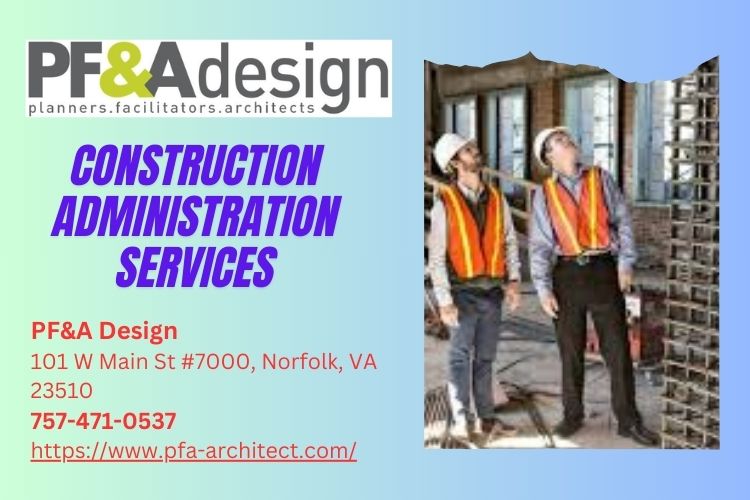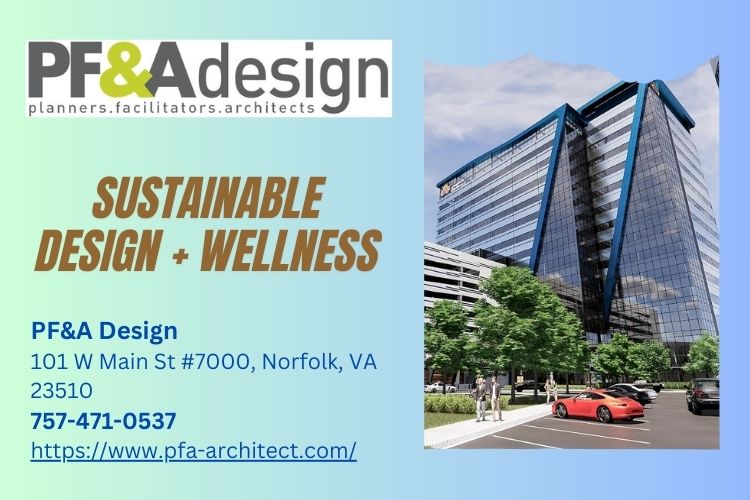Introduction
In recent years, the healthcare landscape has undergone significant transformations, driven by technological advancements and shifting patient needs. One of the most crucial aspects of this transformation is the role of hospital architects. Particularly in Norfolk, VA, a city known for its commitment to healthcare innovation, architects are redefining how medical facilities are designed and utilized. This article delves into innovative design trends that are shaping the future of healthcare facilities, showcasing how professionals like PF&A Design are leading this charge.
Innovative Design Trends: How Hospital Architects in Norfolk, VA Are Shaping the Future of Healthcare Facilities
Hospital architects play a pivotal role in creating environments that prioritize patient care while ensuring operational efficiency. Their designs not only reflect aesthetic values but also incorporate functionality that aligns with contemporary healthcare practices. In Norfolk, VA, architects have embraced innovative strategies aimed at enhancing both patient experience and staff workflow.
The Shift Toward Patient-Centric Design
Understanding Patient-Centric Design
Patient-centric design focuses on creating environments that cater specifically to the needs and preferences of patients. But what does this mean practically?
- Natural Light: Incorporating large windows and skylights to provide ample natural light improves mood and promotes healing. Comfortable Spaces: Designing waiting areas that feel more like lounges rather than sterile hospital rooms makes patients feel at ease.
Case Study: A Norfolk Healthcare Facility
A recent project by PF&A Design exemplifies patient-centric design principles. The facility features open spaces filled with greenery and art installations that help reduce anxiety among patients and visitors alike.
PF&A DesignIntegration of Technology in Healthcare Architecture
Smart Hospitals: The Future is Now
The integration of technology into hospital design is no longer optional; it’s essential. Smart hospitals utilize advanced technologies to improve patient outcomes and streamline operations.
- Telemedicine Rooms: Dedicated spaces equipped with video conferencing tools allow for remote consultations. IoT Devices: Internet of Things (IoT) devices track patient health data in real-time, leading to better-informed medical decisions.
Benefits of Technologically Advanced Facilities
By investing in technology-driven designs, hospitals can enhance operational efficiency and improve overall care quality.
Sustainable Building Practices for Healthcare Facilities
The Importance of Sustainability
As environmental concerns grow, sustainability has become a focal point for many healthcare architects. Sustainable practices not only reduce carbon footprints but also promote healthier indoor environments for patients and staff.
- Energy Efficiency: Using energy-efficient systems reduces operational costs while benefiting the environment. Material Selection: Choosing sustainable materials ensures a lower environmental impact without compromising quality.
Case Study: Green Hospital Designs in Norfolk
PF&A Design has been at the forefront of sustainable architecture in Norfolk through projects that prioritize energy efficiency while maintaining aesthetic appeal.
Flexible Spaces for Multi-Use Functions
The Rise of Flexible Healthcare Spaces
Modern healthcare demands flexibility due to changing needs. Hospitals must be able to adapt spaces for various uses—from emergency care to outpatient services.
- Modular Rooms: Designing rooms that can easily transition between functions optimizes space utilization. Community Health Areas: Creating multifunctional community spaces encourages public engagement while serving different health initiatives.
Real-Life Applications in Norfolk Hospitals
Norfolk hospitals are increasingly adopting flexible designs that allow for quick adaptations based on current health trends or emergencies.
Healing Environments: The Role of Nature in Hospital Design
Biophilic Design Concepts Explained
Biophilic design integrates nature into architectural forms, providing psychological benefits to patients and staff alike.
- Green Roofs: Utilizing green roofs not only improves aesthetics but also helps with insulation. Indoor Gardens: Integrating plants within hospital interiors contributes to a calming atmosphere conducive to healing.
Collaborative Spaces for Medical Professionals
Enhancing Teamwork Through Space Design
Healthcare facilities must foster collaboration among medical professionals.
- Open Workspaces: Encouraging teamwork through open office designs leads to improved communication. Shared Resources Areas: Establishing shared spaces where teams can gather enhances collaborative efforts across departments.
Cultural Sensitivity in Hospital Architecture
Understanding Diverse Patient Needs
Designing hospitals that cater to diverse populations involves understanding cultural sensitivities regarding space usage and aesthetics.

- Prayer Rooms: Incorporating multi-faith prayer rooms acknowledges the spiritual needs of various patients. Culturally Relevant Artworks: Local art installations celebrate community heritage while enhancing patient experiences.
FAQs about Innovative Hospital Architecture
What are some key features of modern hospital design?- Modern hospital design emphasizes patient-centric spaces, technological integration, sustainability, flexible layouts, and collaborative work environments tailored to diverse needs.
- Safety is prioritized through smart layout planning, adherence to building codes, implementation of infection control measures, and utilizing durable materials resistant to wear over time.
- Sustainable practices minimize environmental impact while promoting healthier indoor environments—benefiting both patients and staff through improved air quality and reduced energy costs.
- Technology enhances operational efficiency through telemedicine capabilities, IoT devices for monitoring health metrics, automated systems for managing resources effectively—all contributing toward better patient outcomes.
- Flexible spaces allow quick adaptation based on evolving patient needs or emergencies—facilitating efficient responses during crises or accommodating various treatment modalities seamlessly without extensive renovations required each time changes arise!
- Biophilic design incorporates natural elements into built environments—like plants & natural light—to create calming atmospheres beneficial for healing & mental well-being within healthcare settings!
Conclusion
The innovative trends spearheaded by hospital architects in Norfolk, VA epitomize a transformative approach towards modern healthcare facilities focusing on sustainability while enhancing the overall experience for patients & staff alike! Companies like PF&A Design continue pushing boundaries around what’s possible within architectural realms—ensuring communities benefit immensely from thoughtfully crafted spaces tailored specifically toward delivering high-quality care effectively meeting diverse population demands!

Contact Us
PF&A Design
Address: 101 W Main St #7000, Norfolk, VA 23510
Phone number: 757-471-0537